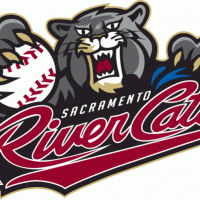Minor League Baseball just released its annual list of its top 25 teams in terms of merchandise sales, and the only consistent thing about it is that there is no consistency.
The list represents a wide diversity of teams and approaches to branding. It includes a range of classifications, from Triple-A teams that play in quasi-major league cities like Charlotte and Indianapolis, to small-market Single-A teams like the Dayton Dragons and Fort Wayne TinCaps.
The list also reflects a range in longevity, from teams like the Durham Bulls and Toledo Mud Hens, which have been around for more than a century, to relative newcomers like the Lehigh Valley IronPigs and the El Paso Chihuahuas, who are the poster children for the new era of wacky identities.
I spoke with Benjamin Hill, who writes about the business of minor league baseball for MiLB.com on Ben’s Biz Blog, and he certainly took notice of the variety of teams represented on the list.
“It shows an amalgam of different strategies and things that can work depending on the size of the market, the relationship with the parent club, and the focus on an irreverent identity,” he said.
Minor league baseball logos are getting wackier every year, and many baseball teams sell gear to fans and non-fans alike. Some teams aim to make their brands, as Hill puts it, “kind of ridiculous and irreverent enough that it can connect to anyone who’s just looking for something cool and quirky and new.” (The Biloxi Shuckers, above, are a case in point.)
Even with an influx of wacky logos, which are represented prominently through the likes of the Frisco Roughriders, Albuquerque Isotopes, and lots of others, the list reflects a range in tone, and includes more serious brands like the Lake Elsinore Storm and San Antonio Missions.
More important than the individual teams on the list itself is the fact that minor league baseball merchandise sales overall crushed the previous mark, set just last year.
“$65.1 million is a pretty big increase from a record-breaking total from last year, $60.3 million,” Hill said. “I think the unifying factor with that is the continued trend toward the unique identities—the teams’ inclinations to do something that has a tie-in to the local market.”
“That obviously entails a move away from the parent club identity, which I think has been a very successful trend for the industry,” Hill continued. “The proof is in the pudding. You’ve seen the total revenue go up and you’ve seen more and more teams trying to do it. They wouldn’t be doing it if there wasn’t a very strong record of success for unique identities.”
That said, just to show that there’s more than one recipe for minor league marketing success, three of the teams on the list go by their parent club’s name, including the Oklahoma City Dodgers and South Bend Cubs, who both debuted in 2015.
“It was rare enough for two teams to revert to a parent identity, and then to see them among the leaders shows that there’s not one magic formula for any one market,” Hill said. “It really depends.”
“In that way, it’s unified in that it shows the diversity of minor league baseball, but not really in a way where you can say, here’s the number one only formula,” Hill said. “Each team needs to look at its market and decide which course is best for them.”
While there is no one formula for success, playing in a big market with a high classification is a step in the right direction. Of the 25 teams on the list, 16 of them play at the Triple-A level.
“When you have a real big market to draw from and a solid fan base in that market, you can consistently be among the leaders just by having more hometown fans to draw from,” Hill said.
This list, in all its variety and unpredictability, signifies what’s great about branding in minor league baseball. Every market is unique, every new team rife with possibility, and you never know which team is going to break through each year.
Below is the complete list in alphabetical order (MiLB does not break it down any further, so there’s no way to tell who’s number one and who’s number 25):














































